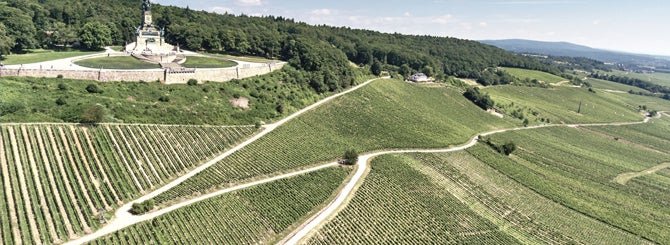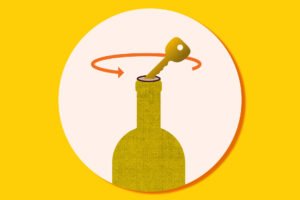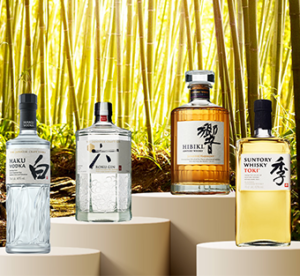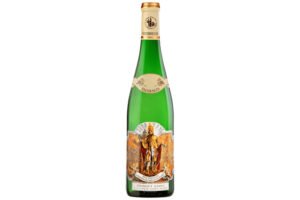Climate Challenge for German Riesling

[ad_1]
Warming wine regions are leaving some German growers contemplating replacing traditional varieties with something very different.
Climate change has had a devastating effect on forests and (most) farmers in Germany.
The forests are dying at unprecedented rates, according to the German minister of agriculture, who warned this February that 79 percent of spruces, 80 percent of pines, 80 percent of oaks and 89 percent of beeches have suffered “massive damage” due to the extraordinarily dry and hot weather, and pest infestations caused and accelerated by climate change.
Simply put, Central European vegetation did not evolve to thrive in these conditions. And silos don’t exist in nature – this widespread death will also, of course, affect the wildlife and insects who depend on these forests and vegetation to live, with ripple effects on all manners of living, recreating, working, breathing and eating for everyone.
But some vegetation has been doing better than ever. Grapegrowers have been benefiting, for the most part, from these warmer temperatures. Harvests have been not just blockbuster in quantity, the quality has, in many cases, been way up too.
“In previous generations, winemakers worried that their Riesling grapes wouldn’t reach optimal ripeness,” says Stuart Piggott, previously consultant at Gut Hermannsberg in Niederhausen, who returned this year to James Suckling to cover German wines. “Those days are over.”
But how long will this much-ballyhooed era of great German wine this last before the climate becomes just a bit too hot to maintain racy acidity? And how are winemakers – and the Verband Deutscher Prädikats und Qualitätsweubgüter (VDP) – adjusting to these changes and preparing for the future? We spoke with winemakers, importers and experts to see how German wine culture is evolving, and refusing to, in an increasingly hot and dry climate.
Raw data
First, let’s take a quick glance at weather data to understand where we are. The past five years have been the hottest and driest on record in Germany, with average temperatures 3.3 degrees Celsius higher than long-term averages in April to October of 2018, and 2020 coming in just behind.
The past decade (2011-2020) is the warmest on record worldwide since humans began tracking such things, with the warmest six years all being since 2015, according to the World Meteorological Organization.
According to the Huglin Index, average temperatures in Germany began a slow and steady rise in the 1970s and 80s. The average temperature in 1976 was 15.7 degrees an extraordinary spike. Most of the 1980s and ’90s saw average temperatures of between 13.7 and 15.8. Between 2013 and 2020, the lowest average has been 15.5, and the highest has been 17.8.
These temperatures are already endangering the viability of several of Germany’s classic grapes – Müller-Thurgau, Riesling, Pinot Blanc – and ushering in an era in which Grenache, Cabernet Sauvignon, Syrah, Merlot and Pinot Noir could thrive, according to Huglin measurements.
“But it’s more complex than it appears at first glance,” cautions Piggott. “The bottom limit of grape-growing capability is well-known, because that is a phenomenon that has been studied for decades. We know where we can’t plant certain types of grapes because it will be too cold. But the upper limits have only become a problem more recently. I don’t believe that Germany will stop planting Riesling in my lifetime, and I’m 60.”
Piggott is no climate-change denier. He is just predicting that farming and winemaking will adjust to the conditions on the ground, and that the style of wines we are used to may evolve.
“The ABV of German wines has been drifting up for decades,” he says. “Between 2003 and 2007, we had a block of super-ripe vintages. But 2018 and the years since have been radical. 2018 was where we feared we’d be in 2050. The last idiot in town had to finally admit there was a problem. You drive through the landscape and see patches of dead trees everywhere. Spruces are almost all gone or dying, and Germany is going to pull them out and replace them with Douglas fir. Can you imagine? It is going to change the entire ecosystem, but it must be done if we want thriving forests again.”
It hasn’t, winemakers are quick to note, just been all about the heat spikes; there have been bud-busting frosts. This spring’s recent freeze across Europe (which destroyed an estimated 80 percent of the harvest in France alone) hit vineyards in Germany too, and the randomness and unpredictability of it adds to the confusion and lack of clarity in how to move forward.

© Alex Schragel
| The past six years have been Germany’s warmest in history.
“In my father’s generation, we started picking in late September, and would end in late October,” says Moritz Haidle, a winemaker at Weingut Karle Haidle in Stetten, Würtemberg. “In 2018, we started picking on the 21st of August, which was unbelievable. That had never happened, and we are very concerned. But we also have had late frosts, which wasn’t a problem for the older generations, but now seems to happen every year.”
Growing preference changes
To grapple with earlier harvest dates, drier water table and overall stranger weather system, winemakers are changing everything about how, what and where they grow.
“Some of the winemakers we work with in Pfalz have watched their alcohol and the sugar levels of their Riesling go up and up,” says Evan Spingarn, portfolio manager of New York’s David Bowler Wine’s German and special European selections. “The difference between great and shitty wine can be as little as a few grams of sugar. Now, these traditional wineries are not ready to rip out Riesling and plant Spanish varietals. Instead, they’re shading the leaves through canopy management and looking for aggressive rootstocks that can reach down further, seeking out clones with smaller and looser berries, changing the direction of the rows to decrease solar impact and increasing biodiversity in the vineyards through soil management, which can cool down the field and preserve moisture.”
Others are transforming D-list vineyards into their stars. Alexander Schregel, the vineyard manager at Leitz Wein in Rheingau, says that they now prize the “vineyards near the forest, instead of the steep vineyards my father favored, because they receive so much sun”.
In Stetten it is now possible to “plant anywhere in the village”, Haidle says. “My father planted Cabernet Sauvignon and Cabernet Franc 20 years ago, and everyone thought it would be impossible to ripen them. But every year, they ripen. I am still planting Reisling and Blaufränkisch, but I see a lot of others I know planting Chenin Blanc, Sauvignon Blanc and Merlot, which would have been absolutely impossible here 30 years ago.”
While the actual vineyard space devoted to international varieties is still low, it is trending up. And Germany is still most associated with whites, but red varieties now take up 34 percent of the space, with Pinot Noir (Spätburgunder) leading the charge.
What’s next?
Grapegrowers are seeking out higher ground, rockier terroirs and new farming techniques, and some brave souls are venturing further north than ever before. In 2009, Balthasar Ress began growing Solaris and Müller-Thurgau on a small plot in Keitum, the most northern vineyard in Germany. Vineyards are being established in Brandenberg and Lower Saxony.
Piggott participated in an experimental planting of 1000 Pinotin vines outside Berlin. The wine was promising, he says.
The days of fretting over the ability to ripen even white grapes are well in the rearview; indeed, we are speeding toward ripening a robust and fruity Cabernet Sauvignon in Pfalz and Rheinhessen and growing world-class Riesling in vineyards winemakers wouldn’t even consider farming 20 years ago.
Piggott is cautiously optimistic.
“Climate change is terrible, but it has also unleashed a great wave of creativity,” he says. “Things that seemed impossible a decade ago are a reality. Germany is now making some of the best Pinot Noir in the world, and I’m seeing amazing work being done to preserve the ability to grow the kind of Riesling we love.”
And while Spingarn is equally bullish on Spätburgunder – both in terms of quality and the delirious enthusiasm with which it is being greeted by wine lovers in the US – he is convinced that climate change will continue to provide not just bigger, but better, wines.
“Climate change is not thus far affecting the quantity of grapes, in fact it’s often boosting harvests substantially,” Spingarn says. “In 2018, what was known as the T-shirt harvest because it was so warm, tons of wine was made. But in my mind, it was not as exciting. It was diffuse and watery. 2009 and 2011, also very hot years where a lot of wine was made, the same thing. Winemakers love it because they have a ton of wine to sell, but bigger and easier doesn’t translate to better.”
[ad_2]




